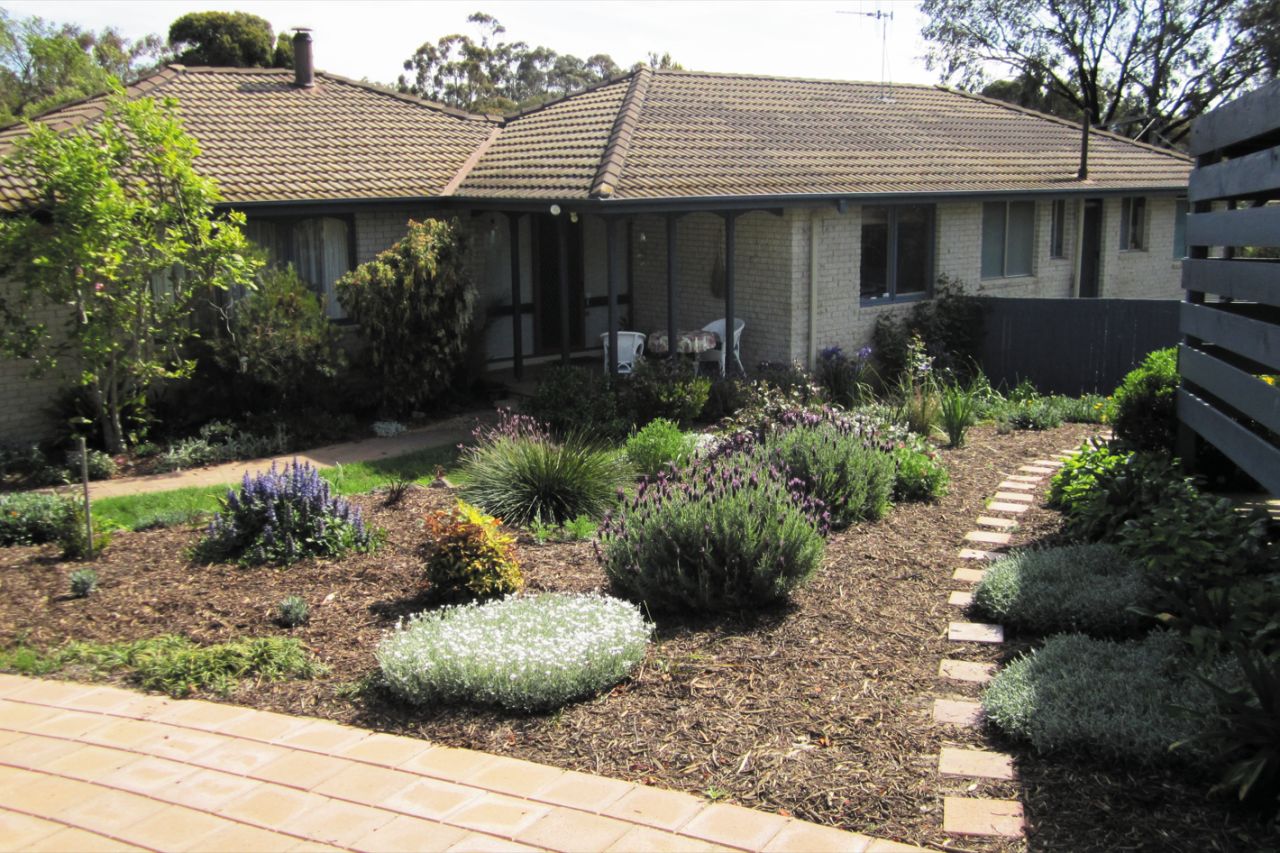Downsizing to a better life
Many retirees are moving into smaller homes to free up funds for a less stressful retirement. We talk to three couples about their downsizing experiences.

For many retirees, a large family home is their pride and joy—providing many rooms and outdoor spaces filled with joy and emotional connections. As retirees see their children leave ‘the nest’, thoughts turn to fashioning a comfortable retirement and repurposing those rooms for new activities and uses.
Yet, others are surprised how quickly it can become a millstone, filled with clutter and upkeep demands, creating a stumbling block to a comfortable older age as they try to avoid some of the perils and pitfalls of their own parent’s experiences.
Along with health and financial security, the family home can fast become a major worry for many in later life.
Downsizing Calculator
Thinking of downsizing? The new National Seniors Downsizing Calculator is an easy-to-use online calculator that helps you calculate the costs and benefits of downsizing.
The calculator gives you an estimate of the costs associated with buying and selling a new home, and how much of the excess proceeds you could put into your superannuation.
Try the Downsizing Calculator now for free.
You could argue the dilemma of working out what to do with the family home is better than being in the position of having no home to sell. Generally speaking, seniors who own their own home are financially better off.
This is supported by research from National Seniors and Challenger, which found retirees’ satisfaction with their financial security increases with age, despite decreasing savings. The key factor influencing this satisfaction is home ownership.
The recent real estate boom, which has seen housing values increase by more than 25% in many parts of Australia, has delivered a further boost to homeowning retirees who now sit on property that could help fund a better life—superior health care, increased lifestyle spending, new hobbies and pursuits, more socialising, and less maintenance and care.
These are some of the reasons ACT-based retirees Adrian and Raelene want to downsize.
They’re in their mid to late seventies, with five children, 13 grandchildren, and a two-storey house with a beloved extensive garden they have built and renovated over nearly 50 years.
However, they also see the writing on the wall when it comes to maintaining their big house.
Initially, retirement villages were high on the list of desired downsizing destinations for two of the couples we spoke to. They believed such villages were not only affordable but would be designed for older people and provide support as they age.
However, the contractual buy-in and selling arrangements, as well as tenure issues, fees and charges, were too complex and onerous. Raelene and Adrian concluded they’d have to pay “up to twice as much for half the size of what [they] currently own”.
They were also disappointed that many villages were not designed for those with mobility issues in later life and were not close enough to amenities and public transport. Another couple, Bill and Diane, rejected the village option because of what they saw as high initial costs and fees, which could prevent them re-entering the housing market if they decided to leave. With retirement villages crossed off the list, both couples were left to the market to find suitable housing.
All the couples we interviewed preferred a townhouse-style home to downsize into, but found little suitable in the market. Builders are overwhelmingly constructing two and three storey townhouses with small rooms and spaces, and narrow corridors, which don’t suit the needs of older people.
The third couple we spoke with, Richard and Lois, experienced this issue firsthand during their downsizing search.
"There are very few single-level townhouse dwellings either being built or even coming on to the market,” Richard said.
Many retirees want these sensible and desirable housing features but are often competing against other buyers who are cashed-up and supported by lenders.
National Seniors is pushing for more senior-friendly housing to be developed, with ‘age-friendly’ design, and improved access and facilities that older people need.

After searching for some time, Raelene and Adrian hit a wall.
“It’s a daunting task,” Raelene said.
“We would really prefer to stay where we are, but as we age it will become difficult to maintain our home and garden, and almost impossible if one of us dies and the other has to care for our home single-handedly.”
The couple’s search has led to great frustration and disappointment.
Compounding this is that the value of their house is still not enough to buy the downsized home they want.
At the top of their ‘want’ list is a single-level property with a small garden, plus three bedrooms with ensuite and separate bathroom, without steps externally and internally, wide corridors, disability-friendly bathrooms, adequate storage space, room for hobbies and interests, and a spare bedroom for grandchildren to sleep over.
Adding to Raelene’s and Adrian’s downsizing challenges was their children’s emotional appeal to keep their family home.
Bill and Diane have been more successful and eventually found a home to downsize into. While they also had to deal with the issue of kids wanting to keep what they described as “their” home, their similar-aged friends “understood and were supportive”.
Ultimately, their journey ended well, and they achieved many of their downsizing objectives, including a better lifestyle, less maintenance and gardening, positive financial outcomes, more security and free time, and being able to stay in the neighbourhood they know and love.
Bill says they were about to give up, having failed to find anything suitable or affordable in their local area. Like Raelene and Adrian, Bill and Diane found that new townhouses were all two-storey and cramped. However, their persistence eventually paid off.
“After a few years of looking, my wife came across a new single-storey townhouse development in the adjoining suburb.”
They liked what they saw and, after talking to the builder, decided to buy off-the-plan, putting down a deposit on the townhouse before it had been built.
“It was sheer luck, but exactly what we wanted. We had a fixed price and plenty of time to sell our house.”

Bill has some good advice when it comes to downsizing: “Find something cheaper to move into so there is a financial incentive to downsize,” he said.
Unfortunately, this is easier said than done.
The cost of downsizing can surprise retirees who expect to sell their ‘big’ home to pay for a smaller suitable home and have money left over to fund a comfortable life in retirement.
As Bill and Diane found, it can depend a lot on persistence, and luck. However, it could be made much easier and more attractive if governments addressed many of the systemic tax, town planning, and design barriers.
For pensioners, one of these barriers is the prospect of any extra money from a sale affecting their payments. This is something
National Seniors is pushing to have addressed and could be achieved by giving retirees over 80 with a Home Care Package an exemption from the assets test if they downsize to more suitable housing.
It’s not all bad, however. The federal government recently enacted legislation so retirees can contribute up to $600,000 (for a couple) into superannuation from the excess proceeds from selling the family home.
Another significant barrier we’re keen to see change is stamp duty. Unfortunately, state and territory governments have become financially dependent on taxing the sale of properties to balance their budgets.
This must change, and we're campaigning for all governments to offer stamp duty concessions for pensioners who downsize. Currently, only three states and territories—the Australian Capital Territory, Victoria and Tasmania—offer a stamp duty concession for seniors who downsize.
Stamp duty was a key barrier for Richard and Lois. Having already confronted many of the problems inherent in downsizing, it was the prospect of paying a $70,000 stamp duty on a house in their desired locality that eventually froze their downsizing plans.
Bill’s experience was different. Bill and Diane were lucky enough to be eligible for a $23,000 stamp duty concession, which helped cement their downsizing decision.
Getting an accurate guide to what your home is worth and how much it will cost to buy and move is essential before you make the leap. These figures can vary significantly depending where you’re selling and buying.
That has been one of the big negatives for Richard and Lois. Like so many retirees, they want to stay in the local area and be close to amenities such as public transport, health facilities, and shops.
Unfortunately, that’s what other buyers want too, pushing up prices in those areas.
Richard and Lois are debt-free and wanted to downsize and remain debt-free. However, they found the price they could expect to get for their house would not cover the costs of downsizing.
“We would end up going substantially backwards both financially and facility-wise, and would have to move away from family.
“We have decided to stay put and make a small change to our house, which will cost much less than the cost of stamp duty if we were to relocate. We are financially secure and can afford to employ garden assistance with the garden as required,” Richard said.
It’s important to remember that downsizing is voluntary and something that will be suitable for some retirees, but not for others. Any decision to downsize should be done after due consideration of the full costs and benefits.
Ideally you should talk to an accountant or financial adviser to fully understand if this is the right move for you financially, and to family and friends to see if it’s right for you personally.
You can also estimate the costs and benefits of downsizing by jumping online and using the new National Seniors Downsizing Calculator.
Make improvements to help sell your home for a higher price (such as renovations or new coat of paint).
- Carefully select your real estate agent. They’ll be your advocate throughout the process.
- If buying off the plan, convert to electricity rather than gas heating and install solar panels in the building stage.
- If you are entering a strata development (such as a townhouse, unit, or villa) make sure you’re across the body corporate rules and check if there are any major works coming up that might have additional levies over and above the ordinary body corporate rates.
- The final move is physically and mentally taxing, so take time to research, declutter and prepare. Alternatively, you might even consider paying a consultant to do the hard work for you!
The National Seniors Better Housing campaign is calling for improved housing options for all older Australians.
Priority 1
Enable Home Care recipients over 80 years old to downsize without it affecting their pension payments and help them stay out of residential care.
Priority 2
Introduce a stamp duty concession for eligible Pensioner Concession Card and Commonwealth Seniors Health Card holders in all states and territories to increase the appeal of downsizing.
Priority 3
Include ‘accessible housing’ design standards in the National Construction Code (NCC) to make new housing more age-friendly and increase the number of downsizing options.
Priority 4
Create a capital grants scheme for the construction of rental housing that incorporates universal design principles to reduce older renters’ risk of premature entry into residential care.
You can find out more about and join our Better Housing campaign or make a donation.
This article is featured in the Spring 2022 issue of National Seniors Australia’s quarterly member magazine, Our Generation.
Become a member today and receive four free hard copy issues of Our Generation (valued at $39.80) a year as part of your membership, along with exclusive discounts, competitions, branch membership and more!
Your membership directly funds our advocacy and research work that benefits older Australians including fixing pension poverty, tackling health care costs, and improving aged care.



